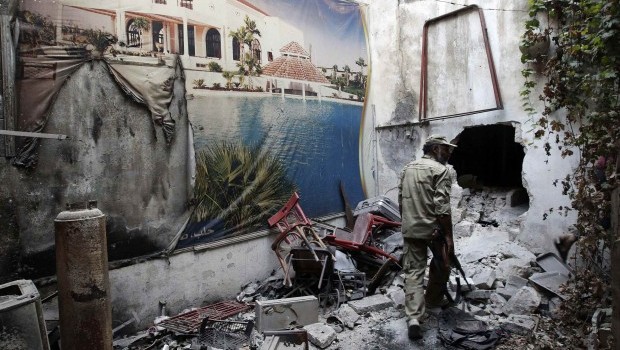It’s not easy to look away from them. The snapshots are so clear and professional that they rise to the level of beauty, but in the worst of its manifestations.
The features are clear. They don’t resemble features taken by a shivering hand or by a cheap technology.
This time, HD technology was used to take photos of a slaughter operation carried out by extremist Islamist factions. Time Magazine published the photos after a Western professional photographer managed to take them in Syria.
The muffled scream and bulging veins of the bound young man who lied on the floor as they held his head to sink the knife into his neck resembled festivities of ancient eras. There was blood on the perpetrators’ shoes and pants that a few hours earlier had looked fresh and clean.
The atrocity is documented using the most professional photography techniques.
A few hours before Time Magazine published these photos, French magazine Paris Match published similar photos.
It seems that the poor-quality photos of slaughter which were leaked to us through YouTube and whose quality decreased the impact of their violence have become the core of professional journalism work. It seems that no one hesitates to publish them anymore.
Eleven years ago, the world was startled by the footage of the slaughter of American journalist Daniel Pearl by Al-Qaeda members in Pakistan. Back then, the photos were low quality. They were dark. But they were enough to terrorize anyone who saw them. Everyone avoided publishing them and distributing them, but they were leaked via the internet. The West was in shock.
Al-Qaeda found the game of slaughtering in front the camera pleasant. Taking photos was no longer a religious prohibition, as some extremists claimed. There was a torrent of photos of beheadings from Afghanistan, Iraq and Chechnya. I will never forget the photos wthe Taliban distributed showing a teenager forced to behead someone condemned by the group as a spy.
Al-Qaeda’s most violent terrorist, Abu Musab Al-Zarqawi, was the star of photographed slaughtering operations. This led to pattern of stereotyping Muslims as the Western public opinion eyed almost all Muslims as a bunch of decapitators. The act of beheading in the name of Islam reached the streets of London a few months ago, and it was also documented by photos.
This atrocity was committed between Afghanistan and Iraq. It became a “thing” in Syria less than two years ago. Each slaughtering operation turned the public blind from seeing the thousands of regime victims. The brutality of photographed slaughter exceeded that of murder by explosives or chemicals.
The paradox today is that Western media, which used to avoid publishing these photos and criticized those who did, no longer evades them. Here, it is documenting them and publishing them during the peak of the global controversy over a proposed military strike against Bashar Al-Assad’s regime. Paris Match published the photos of the decapitation to tell the Western public that this is what awaits us if we intervene in Syria.
